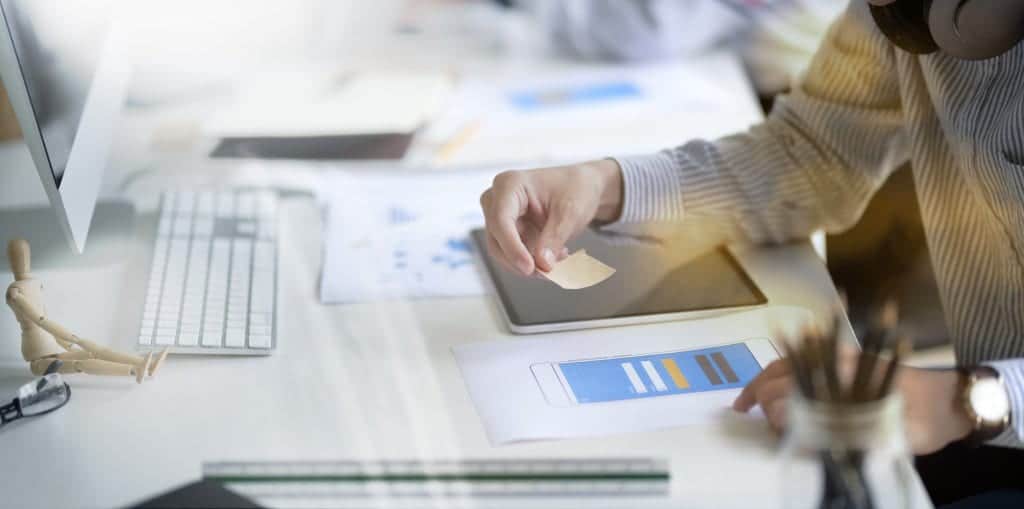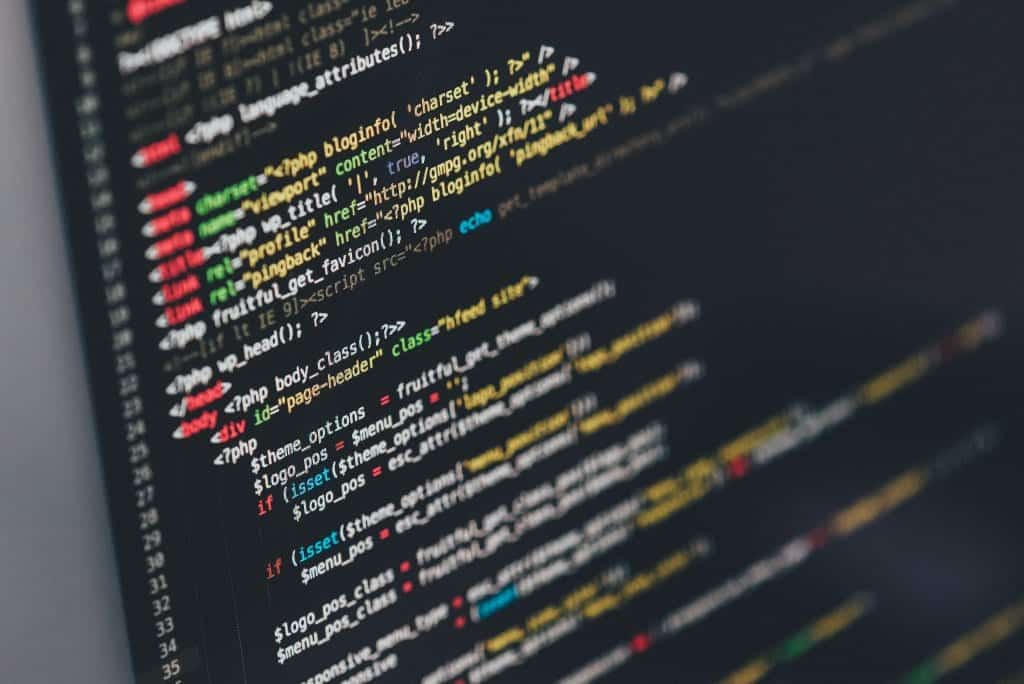Brief Background of Technology
Just imagine a world without technology: a world without lights, time, music, and electricity. Perhaps, we could’ve been hunting out in the jungle today – gathering raw materials. But that scene changed when human ingenuity innovated technology.
Technology is the product of human intelligence – it is a benchmark, a touchstone, of becoming rational. While we strive to promote different identities, we live in a common ground by marrying the concept of rationality with our lived human experiences. That’s how technology was formed.
Tracing back in the history of technology, first humans utilized sharp flakes of stones as knives for their hunting sesh. When they discovered fire, they sparked an interest in building a civilized pattern of living for agriculture and irrigation.
As civilizations rose and years passed, thousands of thinkers had invented early technology designs, such as Thomas Edison’s first electric light (1879), Karl Benz’s first modern automobile (1885), and John Atanasoff’s first electronic digital computer (1937).
Moreover, the massive fascination on technology growth has gained various criticisms, particularly in the areas of intellectual property law. Key players on technology are not just only tech inventors, but also, Patent Lawyers, Patent Agents, Patent Prosecutors, and other personnel who work for the development of IP needs.
The presence of the U.S. Supreme Court strengthened the value of technology, as its decisions helped patent professionals to acknowledge the legal foundation of patents, including the patentability of computer-implemented inventions, software patent debate, and patenting computer programs.
Nevertheless, technology is a breakthrough in human history. It has changed the way humans think and live. Whether or not technology has brought entertainment, increased your business market, and expanded your social circles, the faith of progress lies with our responsible usage of technology, as it shapes the way we think of our future.
Electronics and IT
Technology entails two main facets – Electronics and Information Technology (IT).
- Electronics
Electronics deal with the structural designs of electronic circuits using transistors and microchips for transmitting and processing of analog or digital data. It concerns the behavior of electrons in metals, conductors, semiconductors, vacuum, or gas. By application, the best form of electronics is a personal computer which simplifies complex tasks and stores data that humans couldn’t perform.
Today, the technology of electronics has evolved into different inventions depending on its particular use, such as satellite radio, television, microwave oven, X-ray tube, radar, fire alarm, etc.
- Information Technology
Behind the functionality of an electronic device is the power of Information Technology (IT) – which engages with the core development, management, and maintenance of computer software, systems, and networks. In other words, IT implements the designation of processing information that helps you store data and codes.
The landscape of Information has a multitude of branches, such as Software Engineering, Telecommunications, Computer Networks, Management Information Systems, etc. That’s why inventions like telephones, ATMs, mobile phones, and laptops existed. Through software applications and enhanced algorithms of IT, an electronic device served its purpose with a desirable functionality.
- Electronics and IT as Utility Patents
The Patent Law identifies Electronics and IT as part of Utility Patents – where an invention can be a process, a machine, a manufacture, a composition of matter, or an improvement of an existing idea.
For instance, the best example of an IT invention is computer software. As a utility patent, computer software describes both as a “process” to implement, and a “machine” that enables a process to materialize.
If you have a novel, useful, non-obvious technology invention, patent protection under utility patents will give you exclusive ownership that lasts for 20 years from the day when the application is filed.
What company has the most tech patents?

In 2019, the United States made a breakthrough in the global patent activity, as it granted over 40 percent of the patent application. Of course, world-renowned tech manufacturing companies participated and played a vital role in the outgrowing patent competition.
According to the statistics of IFI Claims Patent Service, a leading reliable supplier of patent data for research and development sectors, revealed that the United States Patent and Trademark Office (USPTO) granted more than 330,000 U.S. patent applications in 2019 – 15 percent higher from the 308,853 total approvals in 2018.
Now, what tech company has the most tech patents in 2019? Interestingly, IFI suggested the top 10 tech companies that contributed to the patent activity in the United States:
- IBM – 9,262
- Samsung – 6,469
- Canon – 3,548
- Microsoft – 3,081
- Intel – 3,020
- LG Electronics – 2,805
- Apple – 2,490
- Ford – 2,468
- Amazon – 2,427
- Huawei – 2,418
Top 5 Tech Companies With Most Tech Patents
#1. IBM
The tech company with most tech patents is still the IBM, continuing its legacy on its 27-year streak as the U.S. patent leader with 9,262 granted patents. That’s the most patent ever given to a company in a single year. Hence, IBM’s leadership has accumulated 140,000 U.S. patents since 1920.
IBM takes pride in research and development on Artificial Intelligence (AI), cloud computing, blockchain, quantum computing, and security.
According to IBM, their AI systems can now understand natural language and deduce nuances on certain text or phrases of speech. Blockchain patents would highly resist ‘replay attacks.’ Cloud technology works with a unified portal that receives, organizes, and streamlines incoming cloud and non-cloud tasks.
Quantum computing supports additional qubits. And their security patents enable homomorphic encryption – a technique that allows users to operate on encrypted data – without having to decrypt it first.
#2. Samsung Electronics Co. Ltd.
Samsung Electronics Co. Ltd. also retains its second spot, with 6,469 granted patents. Compared to 2018’s granted patents, last year has increased an 11% growth. Through a massive IT and mobile services, Samsung Research has innovated robotics, data intelligence, and AI as their core tech advancements.
#3. Canon
Canon, Inc. – a Japanese multinational company – has taken the spot being the third-place with 3,548 granted patents. Canon has been engaging services on network cameras, commercial printing, medical and industrial equipment. Surprisingly, for 34 years of tech service, Canon lauds it as the only company in the world that remains in the top five tech companies with most patents.
#4. Microsoft Corporation
Microsoft Technology ranked at fourth place with 3,081 granted patents. Since its inception in 1975, Microsoft has thrived to promote machine learning, AI, quantum computing, and blockchain in the global market.
#5. Intel Corporation
With a noteworthy increase of 10 percent over 2018, Intel Corporation vied for a margin of 61 behind Microsoft, having 3,020 granted patents. As a globally known service manufacturer for laptops, autonomous vehicles, and machine learning, Intel generated over $3.5 billion in AI-driven revenue last year.
What software can be patented?

Software describes the internal function of a computer, which operates a set of instructions or programs to perform and execute specific tasks. Commonly, tech experts viewed software in the form of scripts, applications, and programs. Hence, everything that runs in a system, a video game, or a social media application is a software.
As a tech inventor, software calls for legal protection. Here is where a software patent comes in!
Software counts as your intellectual property. It may not be tangible, but it accounts for your original work that has a valuable asset. In this sense, software can be your source of profit. However, due to the rising competition of technology growth, your software can be infringed by an infringer.
Software patents legally protect your software source code, idea, or invention. Since software is under utility patent, the patent protection will give you exclusive commercial rights to prohibit others from making, using, or selling your software invention without your legal authorization.
Further, patent agents who successfully obtained patent protection have exclusionary rights granted by the USPTO for a limited time, usually 20 years.
Patentability of software
The patentability of software depends on your compliance with specific technical requirements and the technical features stipulated in your patent application.
There are two main qualifications that a patent prosecutor seeks software eligibility:
(1) A software should execute a desired functionality over an existing computer system; and
(2) A software should address solutions covering all possible issues that a user may encounter in unconventional ways.
Desired functionality
Your software needs to improve over an existing computer system, such that it creates new structures in memory or a new type of database structure.
Addressing Technical Problems in Unconventional Ways
When writing your patent application, your software needs to address solutions covering all potential issues that a user may encounter. Here, you’re not going to pre-empt solutions as it may be deemed unpatentable. Instead, the innovation of your software should address technical problems in indirect and unconventional ways.
In other words, if your patent application aims to feature the benefits that users may obtain from your software, or aims to address a particular issue only by pre-emption, then a patent prosecutor likely denies the patentability of your software.
What does the law require for the patentability of software?
The United States Patent and Trademark Office (USPTO) requires all software patent application to meet at least one of the following requirements for patent eligibility:
(1) That software must overcome the “abstract idea” requirement; and
(2) If software fails to overcome the “abstract idea” requirement, then it needs to provide proof of “transformation.”
What is an abstract idea?
There is no statute or plain meaning of the “abstract idea” aside from the promulgated case of Alice Corp. v. CLS Bank Intl. As the legal definition of “abstract idea” remains to be elusive, the USPTO has defined three classes of an abstract idea, including:
- Mental Processes
- Mathematical Concepts
- Methods of Organizing Human Activity
How do you overcome an abstract idea?
You need to convince the patent prosecutor that the techniques incorporated in your software are innately linked to computer technology through the following ways:
- Identify the computer’s role in accomplishing the process;
- Describe the relationship between the computer and controller;
- Disclose how the software functions in a flowchart; and
- Provide the actual lines of code.
What is a transformation requirement?
If a patent prosecutor finds your patent application to be abstract, then you need to present the following factors:
- That your software addresses technical issues in unconventional ways.
- That your software is a by-product of computer technology.
Today, there are numerous software subjects that were granted by the USPTO, including but not limited to:
- Data compression
- Graphics
- Operating systems
- Computer security
- Word processing
- Spreadsheets
- Business management systems
- Networking technology
- User interface
- Machine control interface
- Encryption
- Databases
- Internet search
- Learning machines, also known as artificial intelligence
- Edge detection and segmentation
- Medical diagnosis device software
Are you ready to patent your software? Book a free consultation with a technology patent attorney today!
Is software a copyright or a patent?

Software invention is the product of your ingenuity, hard work, and innovation. Since this is your original work of art, it counts as your valuable asset even if it is intangible. Hence, without legal protection, a potential patent infringer looks after your prototype and takes advantage to gain profit.
But the question is – how can you protect your software? Are you going to avail of a copyright or a patent?
To arrive at a perfect choice, let us properly breakdown both legal concepts.
Software Copyrights
A copyright is a legal protection of an expressed idea, and not the logic and functionality behind an idea. Meaning, copyrights protect the original works for authorship.
In software copyrights, the source code and the computer programs are common types of software inventions, providing sets of instructions expressed in words and schemes to enable the computer to perform particular tasks. Similar to literary works like novels, poems, songs, or movies, software can be subject to copyright.
As a general rule, copyright protection retroacts at the time of software creation. Hence, if you protect your software under a copyright, the protection extends during the author’s lifetime plus 70 years. But, if you hired someone to create your expressed work, the term of copyright is 95 years from its first publication or 120 years from its creation.
Software Patents
While copyright upholds the expressed original works for protected authorship, patent preserves the logical and technical features of an idea.
In the United States, software patents are widely known as “patents for computer-implemented inventions.” If the software is uniquely tied into a machine, then it has a high probability of patent protection. Hence, patent law avoids abstract ideas – where a proposed software invention is an inherent part of the computer which doesn’t offer technical improvements.
More importantly, the USPTO has enforced strict statutory requirements for the patentability of software, that:
- It must be useful, such as it has industrial applications;
- It must be novel, which improves an existing computer system;
- It must be non-obvious; and
- It must be patentable subject matter.
What are examples of a patentable subject matter?
- Business methods and processes
- Computer hardware
- Machines
- Sports equipment
- Electronics
- Pharmaceuticals
- Fabrics and fabric designs
- Computer software that produces a “useful, concrete, and tangible” result
Furthermore, unlike copyright laws, the patentability of Software patents, Algorithmic Patents, Artificial Intelligence Patents, Information Technology Patents, and Electronics Patent, can last only for 20 years. The protection is not inherent and the date of creation doesn’t automatically retract.
Are computer programs qualified for software patents?
No. The World International Patent Office (WIPO), the USPTO, and the U.S. Federal Circuits have expressly identified the justifications for excluding computer programs for patentable subject matter.
First, computer programs properly belong to copyright laws. In a simple rationale, computer programs were forms of writings of the intellectual works of an author. They were not primarily technical creations since computer programs are inherently part of the computer as its language to command particular tasks.
Second, computer programs are abstract ‘mathematical methods’ and ‘algorithms,’ which falls out from the ambit of patentable subject matter. As held in the case-law of Gottschalk v. Benzon, the Supreme Court ordained that a mathematical algorithm of a computer program, embedded in a piece of hardware which aims to convert binary-coded decimal numbers to pure binary numbers, is abstract – part of scientific and technological work.
Lastly, computer programs don’t provide practical and useful outcomes. The patentability of software requires an industrial application. Hence, computer programs don’t disclose a practical and specific output.
Which is worthy of your software protection – copyright or patent protection?
Your answer depends on your situation.
If you want to avail for copyright for your software, consider these benefits:
- You can sue an infringer in federal court;
- You are directly granted of ownership from the inception of your work;
- You can demand for statutory damages for copyright infringers; and
- You have full ownership of your original work, holding a claim of rights that can prevent an infringer from claiming your work in good faith.
However, the major disadvantage that you must consider is the preservation of your idea. Copyright protection only protects the face of your expressed work. In other words, the spirit of your works can be infringed legally.
On the other hand, most patent professionals, patent agents, and patent lawyers weigh their options on the advantages and disadvantages of patent protection.
If you want to avail for patent protection for your software, consider these key points:
- The patent protects the technical aspects of your software and algorithm patents, which means that the law preserves both the structure and the spirit of your software invention;
- Patent sparks innovation to other inventors across the globe;
- Patents are easily commercialized which your software can be marketable through objective criteria; and
- Of course, when you obtain patent protection, you have the right to exclude anyone else from making, using, selling, and importing your software and other computer-related inventions.
But, patent protection also has pitfalls. For instance:
- Patent requires you to disclose unique information about your innovation during the application process. Regardless to say, this is a potential risk area for other infringers to replicate your technical solutions on your software. Hence, it decreases the competitive advantage of your software patent;
- Patenting your software requires a time-consuming process. You need to wait in the limited queue for the examination of your software invention. Perhaps, this could affect the industrial relevance of your patent application since software is evolving; and
- Unlike copyrights, patent protection is available only for 20 years.
To encapsulate everything, the protection of your software depends on your practical needs — whether to copyright or avail for patent protection.
Can I patent code?

No. You can’t patent a code since computer code, like other literary works, are automatically protected by copyrights.
As a general rule, patent protection concerns only with primarily technical creations that offer technical improvement to an existing computer system, such that it creates new structures in memory or a new type of database structure.
In the present case, computer code is a language that is known on a computer. It is a set of instructions expressed in words and schemes to enable a computer to perform particular tasks. It merely functions as a required element to achieve a desirable design that only computers understand. Hence, computer code expresses an idea, and not the logic and functionality behind an idea.
The appropriate protection a code needs is through copyright – giving you the full protection of authorship in your code.
Can I patent a software app?
Yes, you may patent an app, but know that only some aspects of what you’ve created are patent-eligible.
Recognizing the ubiquity of different apps today, Bold Patent suggests to follow these seven steps to avoid patent infringement:
1st. Software Inventorship and Ownership
Software inventorship and ownership concern the documentation in creating your invention, meaning that you need to identify all the steps you have taken as well as the people involved.
In reality, ideas come up when you are collaborating with other people that commonly took place in your office spaces. To avoid the dispute of co-inventor ownership, the documentation of all processes will help you clarify things.
2nd. Research other apps
Researching other apps will avoid patent infringement, especially that patent trolls are awaiting to file patent opposition against your application. While these trolls take advantage of holding your rights and barring your app invention to be publicized, you need the third step – patent professionals.
3rd. Find your Software Patent Attorney and Law Firm
The language of patent laws is so complex and vague that you need a patent expert to simplify things for you. Here at Bold Patent, we offer our dynamic and world-class software patent attorneys who have a proven background in patent litigation. Plus, our software patent attorneys have a credible profile in enabling other apps to operate and profit.
4th. Software App Invention Disclosure
Disclosing information in your software app invention is imperative during the patent application process. Additionally, it also helps your patent attorney to ascertain the patentability of your software.
A common mistake that most tech inventors commit is presenting code or structure as their software invention. However, patent laws don’t protect computer codes.
Hence, Bold Patent suggests having your patent application engaged in an invention expansion process – a flowchart that shows the functional steps of your app invention.
5th. Professional Software Patent Search and Legal Opinion
Here is the core of all patent concerns – is your app patent-eligible?
Since you have disclosed your software app invention, your software patent attorney then conducts a patent search to inform you of the patentability of your app. Your patent attorney formulates a legal opinion, answering:
- Whether or not your app is eligible for patent protection
- Whether or not the risk of investment into the patent application will be worth it
For a sound business decision, the patentability equates the marketability of your app.
6th. Filing a Provisional or Nonprovisional for Your New App
There are two ways to file a software patent application – either by a provisional or non-provisional patent application.
As a general rule, if you plan to market your app through an achievable and fast speed, then file for a nonprovisional patent application. In this way, the USPTO will directly examine and assess whether or not to grant your application.
But, if you are willing to wait in a queue of patent applicants, then file for a provisional patent application. Here, patent provision serves only to lock in an early priority date, where it advances your patent rights and claims against later applicants.
7th. File the Software App Patent Application with the USPTO
At this point, you’re now going to finalize the writing of your patent application. As you have collaborated with your software patent attorney, his legal opinion after the patent search will be used to develop the written description, claims, and drawings.
Here is a list of all of the documents you will need to complete with your patent attorney before submitting the patent application:
- Oath/Declaration
- Information Disclosure Statement
- Cover Sheet
- Specification
- Claims
- Drawings
- (optional) Application to Make Special
- (optional) Patent Cooperation Treaty (for International Filings)
- Fee Sheet
- Entity Status Form
- Application Data Sheet (ADS)

Conclusion
To recap here is the information we covered about technology patents:
Table of Contents
- Brief Background of Technology
- What company has the most tech patents?
- What software can be patented?
- Is software a copyright or a patent?
- Can I patent code?
- Can I patent an app?
Are you ready to bring your tech invention to the world? Book a free consultation today, but before you do, read our in-depth guide on how to patent an idea and patent cost. They provide valuable attorney information that may save you thousands!

